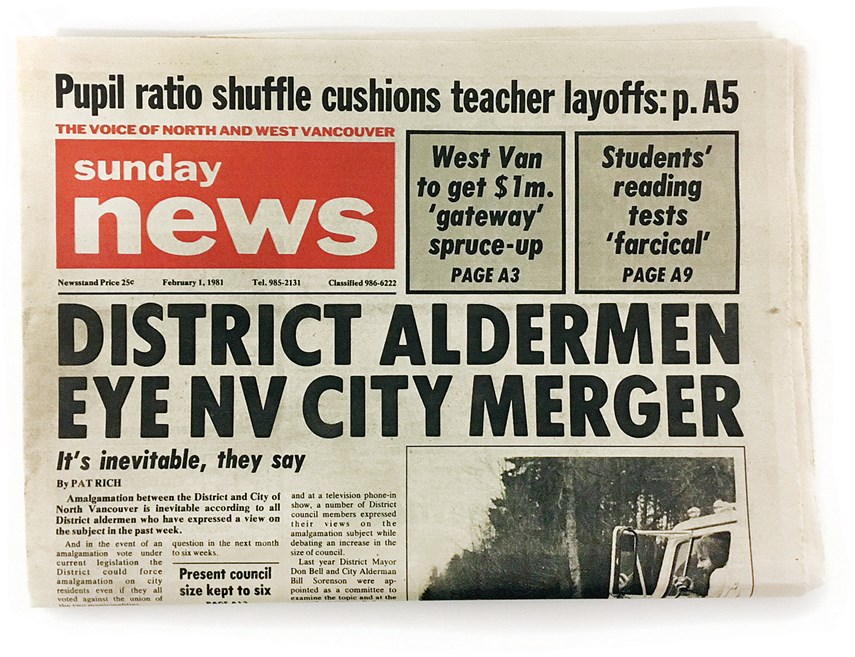Amalgamation ‘inevitable’:
Under current provincial legislation North Vancouver District could force amalgamation on City residents the North Shore News reported on Feb. 1, 1981. Both councils were asked to approve a study on the issue. Alderman Jim Ball said amalgamation was logical and inevitable but council was cautioned the possibility was at least a year or two away.
District town meetings televised:
Billed as the first of its kind in Canada, the District of North Vancouver hosted a phone-in show on Community 10 television inviting members of the public to ask questions or express views to council members. Topics on the first Tuesday night telecast ranged from the size of council and the ward system to future uses of the Delbrook gym and the bylaw prohibiting the parking of recreational vehicles in the front of properties during winter months. West Vancouver council planned their own phone-in show for the following Tuesday but Mayor Derrick Humphreys said the On the Line broadcast was not connected in any way with the North Van show and didn’t want any comparisons made between the two.
Where is downtown North Van?:
Alderman Elko Koon suggested City council was discriminating against Upper Lonsdale by designating Lower Lonsdale as the City’s downtown area in an application for provincial funding in the Downtown Revitalization Program. Alderman Gary Payne said Upper Lonsdale didn’t need assistance. Plans for any money received included buying the Bank of Commerce building at 92 Lonsdale to use as a museum and development of a waterfront park.
Second Narrows Gateway plan thrown out:
District council unanimously rejected a proposal to build a residential development at the northwest corner of the Second Narrows Bridge. The proposal included a 300-unit hotel and three highrise towers on First Nations land adjacent to Lynnmour Marina. Tac Holdings Ltd. said the proposal had the same potential as the False Creek development and would reapply.
West Van pulls out of tree fights:
Council was told that the arborist mediation program took up approximately 90 per cent of staff time and was fraught “with horrendous legal implications.” The decision was made to discontinue the service of offering its arborist to help mediate between neighbours fighting over trees.



